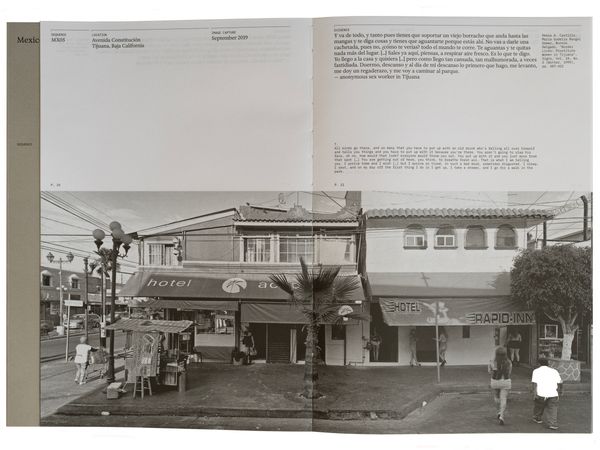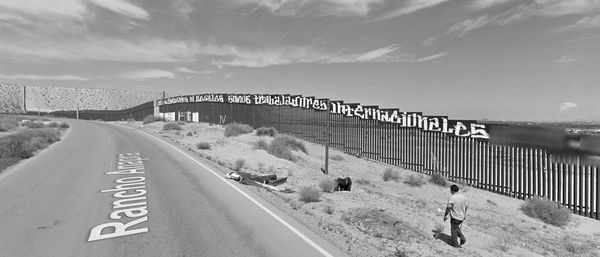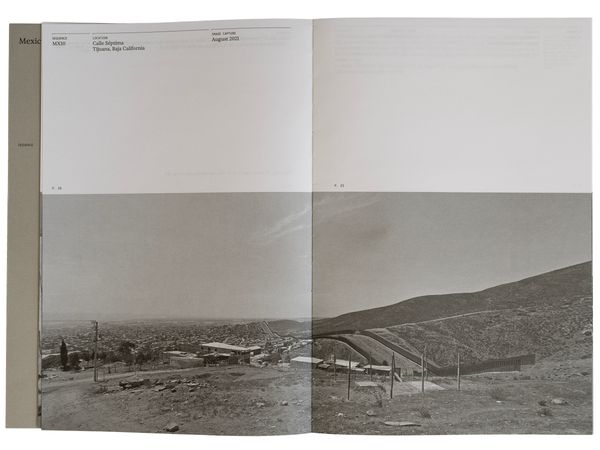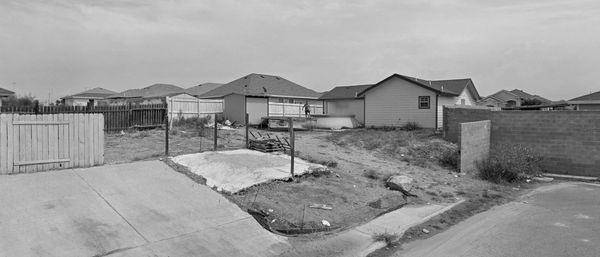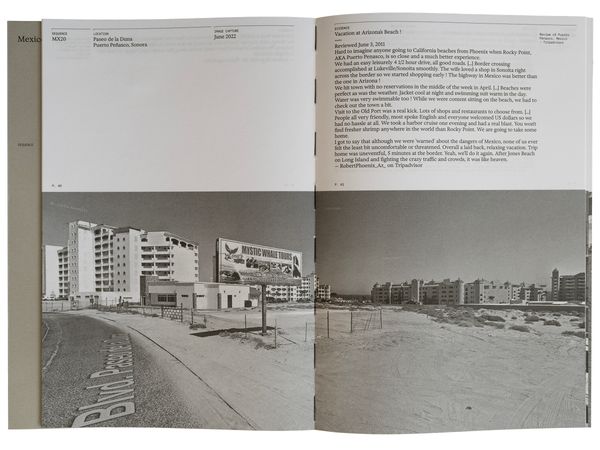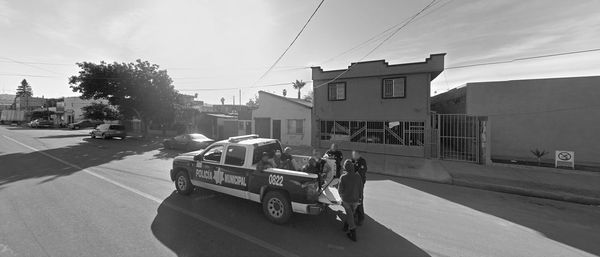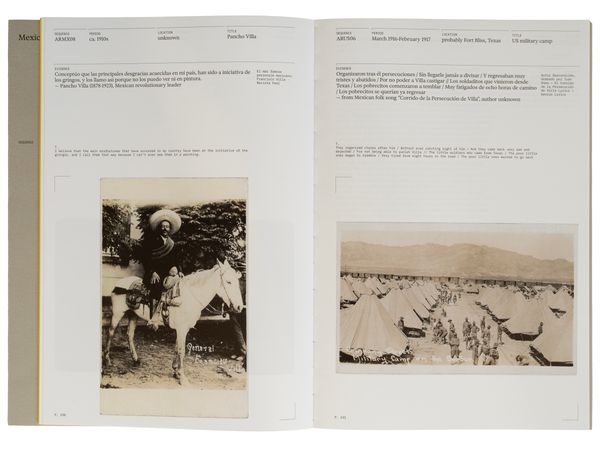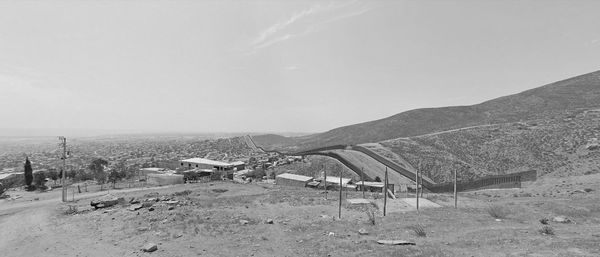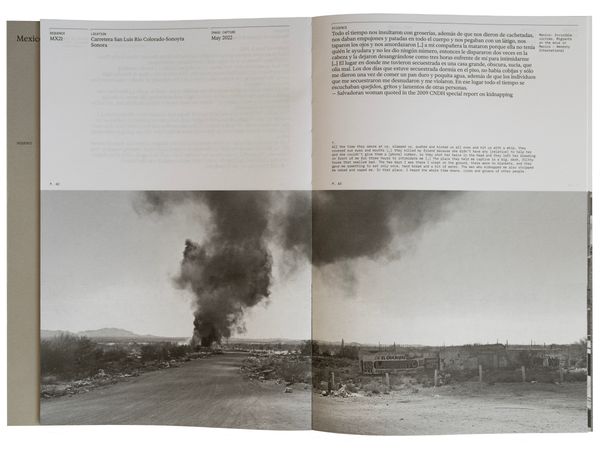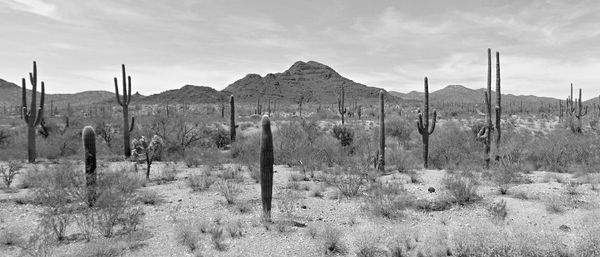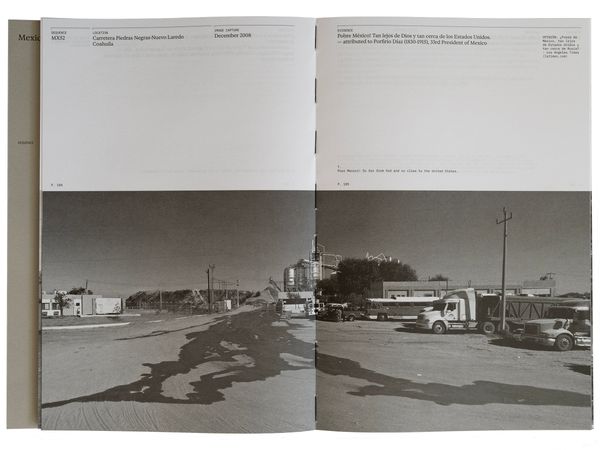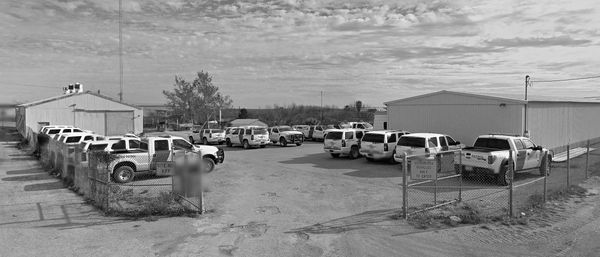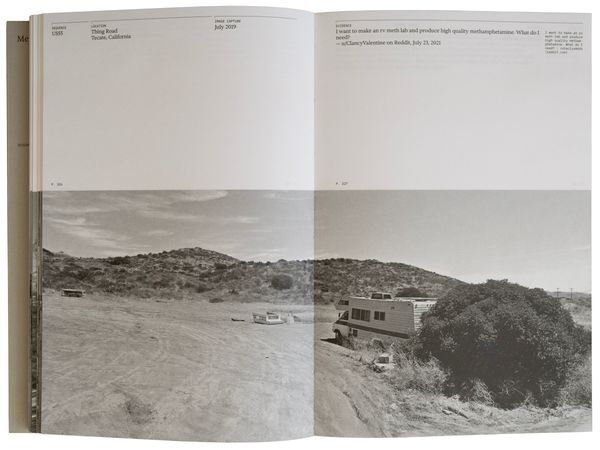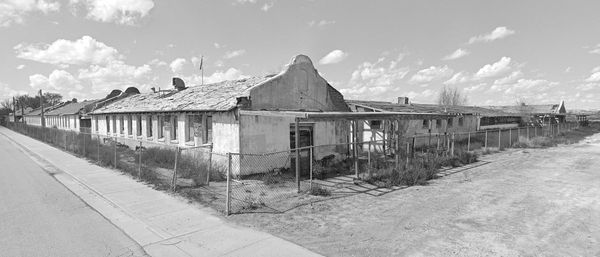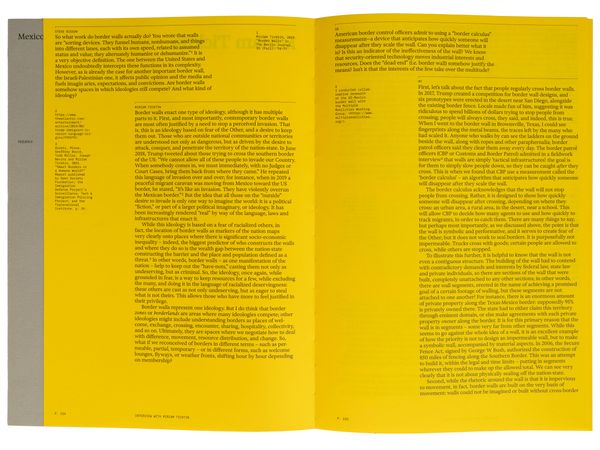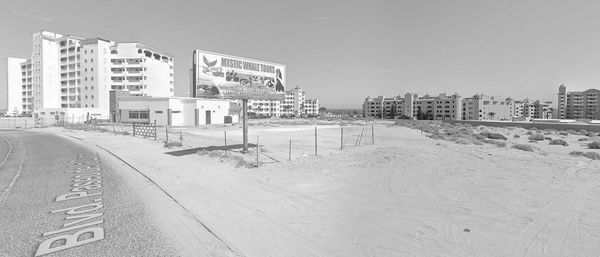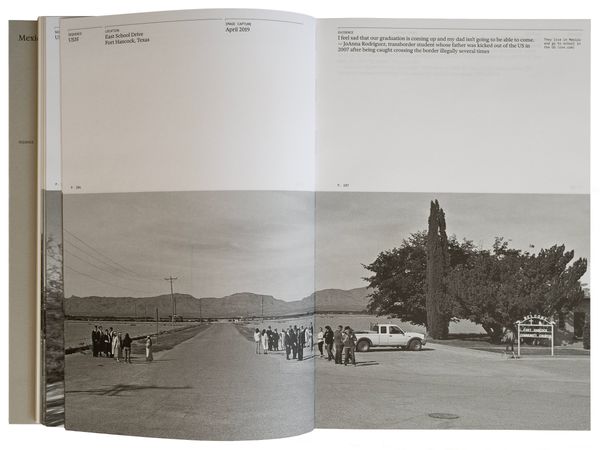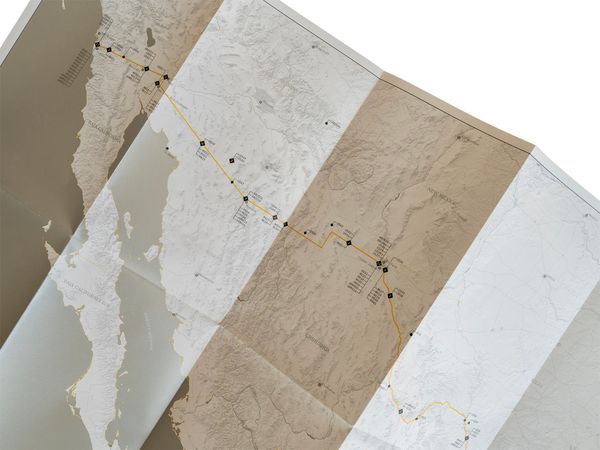Photobook Review: Dead End by Nicola Moscelli
-
Published29 Aug 2024
-
Author
- Topics Photobooks
Dead End is a book about a border, the US-Mexico border. Blending Google Street View images with extracts of news stories, personal narratives, and stories on the asymmetrical relationship between the two countries.
The first thing to understand about Dead End is that Nicola Moscelli, the author has never been to Mexico. It is not an insider’s story.
Instead it makes a virtue of Moscelli’s obsession with the border (it was made during Covid, but that’s almost beside the point), and the innate sustainability of being a virtual tourist rather than an actual tourist with a carbon footprint twice the size of Wales, half of which is taken up by the energy used to fuel the accompanying ethical rationalisations that justify the project.
The book is divided into three sections (and comes with a map). The first section consists of Google Street View images of Mexico, the middle section consists of a series of texts including historical background and vernacular images, and the final section consists of Street View images of the United States.
And the book is a series of Dead End. This book shows where streets come up against a border wall, where movement is stopped by rolls of razor wire, where cities are arbitrarily split in two, where multiple histories run together that highlight the political and economic, and ethnic divide.
Each Street View image is stretched across the gutter to the sides of page, the top third of the double page spread left for white space and snippets of text that detail the date of capture, the location, and a text classed as Evidence.
So in Nogales, Mexico, we read, ‘This is one city. This is one place that was cut in half. That’s essentially what happened;’ a snippet that takes us back to the 19th century, Manifest Destiny, and the war which ceded California, Texas and more to the United States.
It’s a historical backdrop against which land theft, genocide, racism, and the wholesale removal of civil rights took place, and these are reprised in images that resonate with stories of the Mexican revolution, folk songs, dental tourism, border brutality, drug dealing, prostitution, violence against women, and the vulnerability of migrant workers making their way north.
Set against this are curious (and sometimes contended) anecdotes such as how the word gringos came to be. ‘They say the way the title originated was this; at that time an old ballad, “Green grows the Rushes, O!” was very popular and all the American soldiers were singing it. The Mexicans could only catch ‘green grows and so they have ever since called the Americans gringos.’
The American section begins with an image of a SpaceX rocket standing on Remedios Avenue, Boca Village, Texas. There are suburban homes, Border Patrols, and the strange landscape that is created when one country meets another. ‘The US-Mexican border es una herida bierta (open wound) where the Third World grates against the first and bleeds. And before a scab forms it haemorrhages again, the lifeblood of two worlds merge to form a third country – a border culture.’
And that is what Dead End is all about, the culture that is built along the towns, roads and villages that border the fence. It shares some of the border concerns and the essential violence of building a border in the first place of Eva Leitolf’s Postcards from Europe. It shares the inextractable movement of people to be found in Lara Shipley’s Desire Lines, but the determining factor in Moscelli’s images is the presence of roads which a GSV car can drive down, and the worlds that can be found on those border highways, byways, and dead-ends.
The presence of Street View images links Dead End to earlier Street View works by people like Mishka Henner, Doug Rickard, or Michael Wolf, but with Moscelli, the images are an entry into the non-human photography of GSV, an impetus to go into one’s own Street View dive, linking images, ideas, history and geography in what the publishers call ‘scopic’ archaeology, an archaeology ‘…that uses images as fossils of social memory.’
The book is wonderfully designed, with the cover leading to the contents, the mapping referenced in different layers that are made to be accessible, something that is not always a given in a book of this nature.
There are times when a book of endings is just that, a series of images that shows walls, blockages, barriers and not too much more. The concept is neat, but nobody survives on a diet of neatness. In Dead End, there’s an underlying feeling that the barriers are temporary. The blockages are porous. People flow over, under, and through them. Money, culture, politics, drugs and guns create a two-way communication between Mexico and the United States, a communication that is violent, dysfunctional, and based on a history of two hundred years of white supremacy and manifest destiny.
--------------
Dead End by Nicola Moscelli is published by Penisola Edizioni in collaboration with Antiga Edizioni
First edition, May 2024
500 copies
20 x 29,7 cm
360 pages
Offset printing
Soft cover with flaps
Swiss binding with exposed spine
Graphic design and cartography by Roberto Vito D’Amico
ISBN 978-88-84354-53-2
--------------
All images © Nicola Moscelli
--------------
Nicola Moscelli is an Italian photographer and documentarist based in the Netherlands. Born in Taranto in 1980 and raised in Bari, where he graduated in electronic engineering. He lived in Madrid, Vienna, and Munich before moving to The Hague, where he currently lives. Currently, using his own photographs and archival material, he pursues the development of visual narratives focused on the anthropological investigation of the environment in terms of its identity and its historical and cultural legacies.
Colin Pantall is a photographer, writer and lecturer based in Bath, England. His next online courses begin in September, 2024. More information here. Follow him on Instagram
